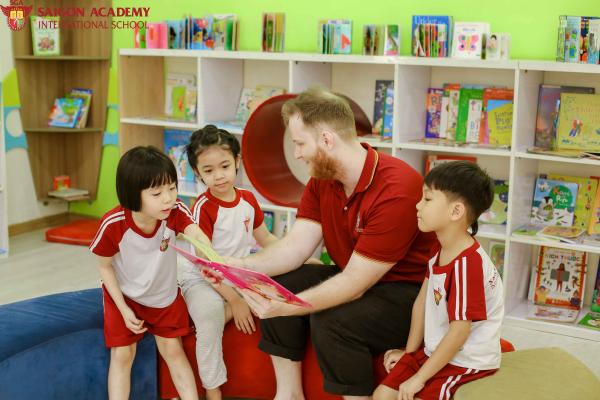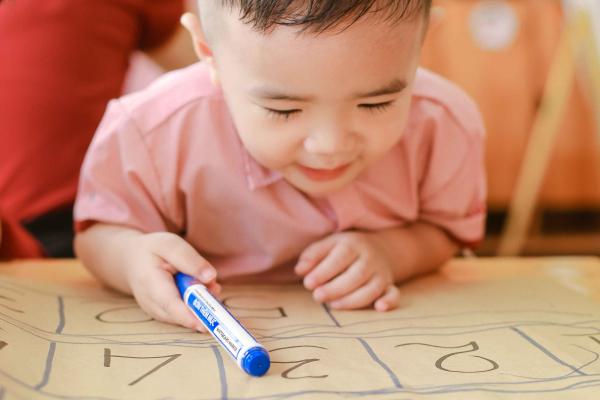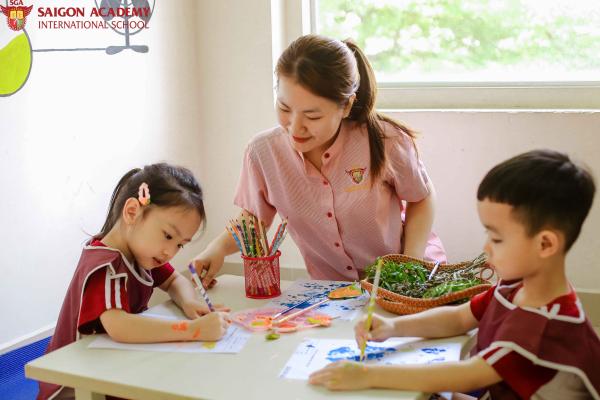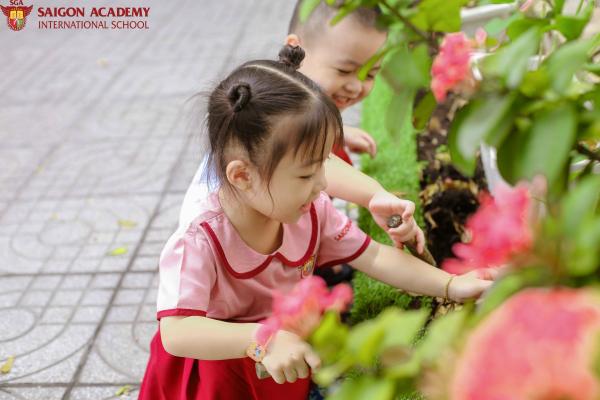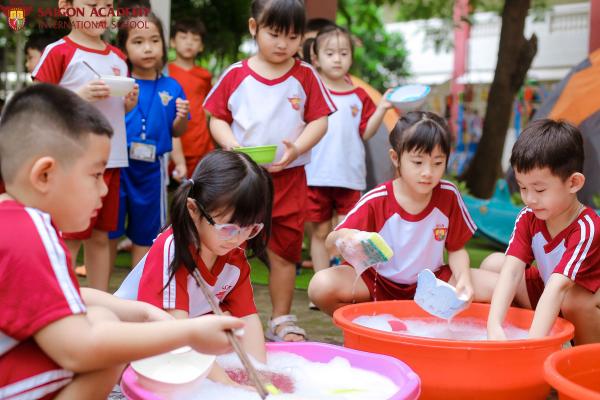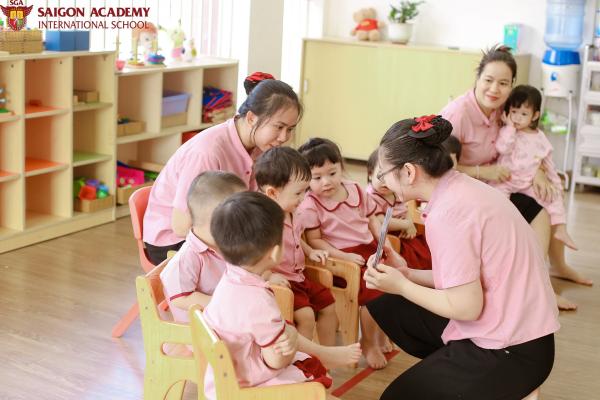Early Childhood Educational Program considers children’s ability to read and understanding vocabulary is considered as a part simultaneous developing process of “visual language” (written language) and “auditory language” (spoken language). Children are taught communication etiquettes and given the opportunity to express their emotions, ideas, and personal thoughts in front of the public. Children’s reading skill is developed concurrently in 2 forms: photographically memorizing the words and combining the letters. Children are totally exposed to the diversified environment with many vocabulary games, flash cards with alphabet letters, pictures, words, and many other kinds of books appropriate to their level. Meanwhile, their writing skill is also progressed as their brains develop. A child is encouraged to develop listening, speaking, reading, writing skills daily in almost every learning activities according to the principle “Teaching with flexibility, learning through playing, teaching consciously that allow student to learn subconsciously” helping develop his linguistic ability naturally with interest and enthusiasm.
English as Second Language (ESL) Curriculum is designed and integrated help children learn English with thematic study program. Integrated lesson plans, diverse activities lead to children’s full linguistic development. In addition to improving language skills (listening, speaking, reading, and writing) through the studying themes with Native English-speaking teachers and Vietnamese teachers, students have the chance to practice presentation skills, interpersonal skills, visual comparison, to express their rational thinking, creativity, and other skills as well as techniques. English is not only used on ESL lessons but also in many daily routines and activities, through games, music, and book.
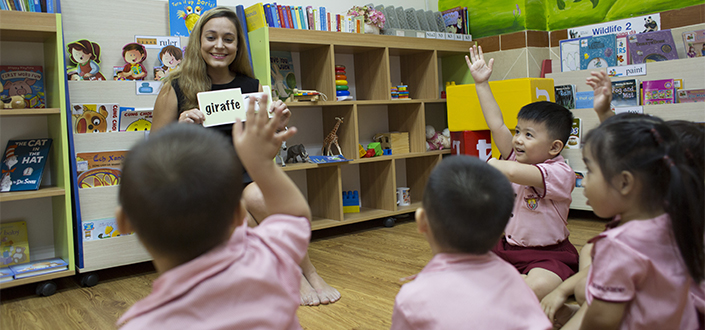
Key Development Indicators:
1. Comprehension: Children understand language.
2. Speaking: Children express themselves using language.
3. Vocabulary: Children understand and use a variety of words and phrases.
4. Phonological awareness: Children identify distinct sounds in spoken language.
5. Alphabetic knowledge: Children identify letter names and their sounds.
6. Reading: Children read for pleasure and information.
7. Writing: Children write for many different purposes.
8. English language learning: Children are able to use and making conversation in English.

